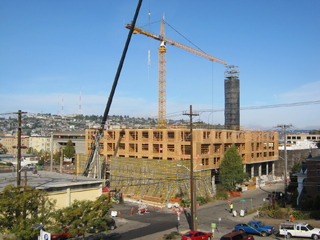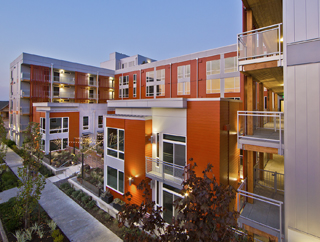|
Subscribe / Renew |
|
|
Contact Us |
|
| ► Subscribe to our Free Weekly Newsletter | |
| home | Welcome, sign in or click here to subscribe. | login |
Architecture & Engineering
| |
 |
October 25, 2012
Sustainable living doesn’t have to be expensive
Runberg Architecture Group
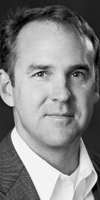
Runberg
|
It seems as though “sustainable living” can be mistaken with “high cost of living.”
While this can be the case in some applications, in no way does it need to be. Sustainable living can, and should, be accessible to all.
Balancing economic, social and environmental interests leads to sustainability, the long-term maintenance of our wellbeing, and to the responsible management of resources. This naturally results in a higher quality of life.
Sustainable buildings can also seamlessly integrate into the community, keeping the spirit of the area alive, whether through adaptive reuse, historic preservation or a design inspired by the culture of the neighborhood. This belief is a core value at the Runberg Architecture Group and is put into practice with each project we design. What follows are two project case studies — the first is under construction and the second recently opened — to illustrate how we design sustainable projects with the community in mind.
StackHouse Apartments
Situated on a full city block in the emerging South Lake Union neighborhood of Seattle, this under-construction project combines two new mixed-use residential developments with the restoration and adaptive reuse of the Supply Laundry Building, a city historic landmark. Teamed with the progressive and sustainably conscientious client Vulcan, the challenge was to design a project that meets high environmental standards, incorporate the restoration and adaptive reuse, and meet housing needs in a growing area — all while being contextually appropriate, and importantly, staying at market-rate.
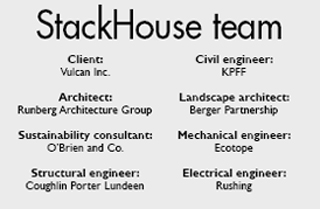
We started at the neighborhood level. We carefully studied at the surrounding area, the cultural history, what’s going on now, what the future may hold for this burgeoning neighborhood, and how we could sensitively incorporate these elements into a project that would positively impact the environment.
Responding to the large size of the urban site, the scale of the project has been broken down into a series of smaller, quarter-block developments characteristic of the community. Careful consideration was given to the development of common space at grade, including a large courtyard gathering space behind the historic Supply Laundry Building and a cross block pedestrian mews to encourage circulation to and through the block.
There are multiple tenant amenity spaces, including a community common room, a Wintergarden solarium, sports court/gymnasium, theater room and two expansive rooftop gathering spaces that feature views, barbecues and a P-patch.
The design team then studied the most effective, practical and efficient sustainable objectives. Flanking the east and west streetscapes, Vulcan teamed with Seattle Public Utilities on the ambitious Swale on Yale project, which implements large swathes of bioswale plantings to act as biofilters, cleaning 150 million gallons of untreated stormwater a year flowing from neighboring Capitol Hill.
Within the underground parking structure, a reverse-cycle chiller system was implemented to transfer heat from garage exhaust to domestic hot water, reducing energy demands for hot water by a factor of three. Other sustainable methods are: green roofs, extensive urban agriculture, motion-sensing lights in corridors and garages, and low-flow plumbing fixtures. Incandescent lighting will be replaced with fluorescent and LED fixtures.
Additionally, rainwater will be collected in cisterns to be used for landscaping, Wintergarden and rooftop garden irrigation and future gray water reuse.
StackHouse is pursuing LEED platinum certification and meeting the Seattle 2030 District high-performance building challenge.
GreenHouse Apartments
Recently opened, GreenHouse is in the heart of Columbia City and is the first new market-rate development in the neighborhood since 1969, with 20 percent of the units designated as affordable housing under Seattle’s Multifamily Property Tax Exemption Program. The design team and developer Harbor Urban were inspired by the many unique aspects of Columbia City, including the nearby Link light-rail station, popular farmers market and the diverse representation of cultures and ethnicities.
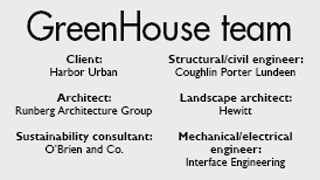
Through time spent in the community, we found that Columbia City residents value the social and sustainable qualities of urban agriculture. The goal was to incorporate these cultural and environmental elements into the GreenHouse design by developing a project that supports alternative commuting options, achieves LEED gold certification, and brings urban agriculture directly to residents.
Using urban agriculture as a foundation, the GreenHouse design has an extensive 2,300-square-foot roof garden with irrigated gardening plots for each resident, a rooftop greenhouse, and edible landscaping with abundant fruit trees and berry bushes throughout the property.
Hewitt worked on rooftop and community gardens and edible landscaping, which resulted in significant environmental benefits to the community. Plants absorb rainwater and reduce runoff. Cistern irrigation increases fresh water reserves, and the layer of soil and vegetation on the roof provides additional insulation for buildings.
Also, locally produced food reduces the need for vehicle-based transportation by closing the gap between producer and consumer.
GreenHouse apartments have Energy Star appliances, extra-large windows to maximize natural light and are a five-minute walk to the light-rail station, giving residents the option of reducing time spent in a car.
To support the communal side of the development, a two-story community room with kitchen and dining space, and rooftop barbecues, are part of the roof-to-table experience. Other tenant amenities are a rooftop fire pit, Wi-Fi in common areas, a pet friendly policy, secured storage on resident floors and a fitness center.
Beyond green building
Sustainable living goes beyond green building; it is about carefully balancing economic, social and environmental needs in order to maintain well-being. But, it also needs to make economic sense.
Urbanization is changing human demands and straining natural resources. Many organizations are harnessing the concept of designing sustainable buildings with the community in mind. Simply put, making sustainable living easily accessible improves the quality of life throughout our community.
Brian Runberg, AIA, is the principal architect and founder of Runberg Architecture Group in Seattle. He brings 22 years of experience in residential and commercial projects for both public and private clients.
Other Stories:
- TAF building is a calm respite among the trees
- Survey: Baylis Architects
- Survey: Lance Mueller and Associates
- Survey: NAC Architecture
- Survey: Cary Kopczynski & Co.
- Survey: Swenson Say Faget
- Survey: Weber Thompson
- Survey: MulvannyG2 Architecture
- Architects get creative to meet green expectations
- Economic downturn doesn’t slow sustainability
- Seattle’s climate puts a chill into data centers
- Early flood warning gets a boost from technology
- Retailers mix it up; architects adjust
- How strong is your building’s public safety radio signal?
- Consulting engineers change the playbook as prime consultants
- Survey: Rice Fergus Miller Architecture & Planning



